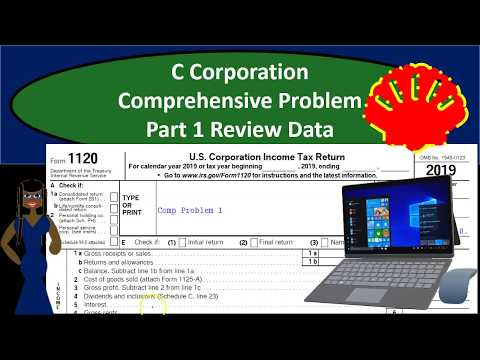Generally Accepted Accounting Principles

The confidence of users of the financial statement cannot be maintained until there is a close adherence to this principle. Invoices and vouchers for purchases, sales and expenses, physical checking of stock in hand etc. are examples of objective evidence which are capable of verification. Since they are held in a ‘going concern’ for earning revenue and not for resale, there is no such utility to show the expected realisable values in the Balance Sheet. Besides, under this concept, prepaid expenses are recognised as assets since the benefits will be utilised in future when the business entity will continue. Going Concern Concept helps other business undertakings to make contracts with specific business units for business dealings in future. It also stresses more emphasis on the earning capacity in judging the overall performance of the business.
5 common myths about carbon accounting: Is it really worth it? — Trade Finance Global
5 common myths about carbon accounting: Is it really worth it?.
Posted: Thu, 10 Aug 2023 07:00:00 GMT [source]
However, the FASB and the IASB continue to work together to issue similar regulations on certain topics as accounting issues arise. For example, in 2014, the FASB and the IASB jointly announced new revenue recognition standards. On the other hand, in value-based accounting (e.g. current cost accounting) accounting data is not bias-free because the value may mean different things for different persons. In other words, the Objectivity Principle requires that each recorded transaction/event in the books of accounts should have adequate evidence to support it. According to the Objectivity Principle, the accounting data should be definite, verifiable and free from the personal bias of the accountant. The financial statements must disclose all the relevant and reliable information which they purport to represent so that the information may be useful for the users.
Required departures from GAAP
Accountants cannot try to make things look better by compensating a debt with an asset or an expense with revenue. Accounting principles help hold a company’s financial reporting to clear and regulated standards. In the United States, these standards are known as the Generally Accepted Accounting Principles (GAAP or U.S. GAAP). Companies required to meet GAAP standards must do so in all financial reporting or risk facing significant consequences. Conservatism Principle – accountants should always error on the most conservative side possible in any situation.
Instead, money would only be counted as income once an invoice is reimbursed. Numerous smaller companies begin with cash basis accounting, but accrual basis financial statements offer you a clearer sense of how your business is doing financially. Generally accepted accounting principles (GAAP) mandates public companies to always go for accrual accounting. When a publicly traded company in the United States issues its financial statements, the financial statements have been audited by a Public Company Accounting Oversight Board (PCAOB) approved auditor.
Accounting Principles Explained: How They Work, GAAP, IFRS
At the end of the period, the accounting specialist or bookkeeper will prepare financial statements. This helps the business measure their success, track investments, and plan for the future. The accounting principles are guidelines which the accountants and the organizations must adhere to while preparing the financial statements. It prepares the companies towards efficient stakeholder management as there are situations wherein the stakeholders demand financial statements that are prepared in line with the generally accepted accounting principle. Anyone exploring a degree in accounting or finance is bound to encounter Generally Accepted Accounting Principles (GAAP) somewhere along their educational path.
- To achieve basic objectives and implement fundamental qualities, GAAP has four basic assumptions, four basic principles, and five basic constraints.
- Several thousand dollars may not be material to an entity such as General Motors, but that same figure is quite material to a small, family‐owned business.
- Thus, in 1959, the AICPA created the Accounting Principles Board (APB), whose mission it was to develop an overall conceptual framework.
- This is important because stakeholders need to know the true financial position of the company so they can make more informed decisions.
By applying similar standards in the reporting process, accountants can avoid errors or discrepancies. This refers to cash or cash equivalent that was paid to purchase an item in the past. While the value of an asset might rise or fall with inflation, the historical cost is reported on the financial statements. Net income is difference between total income and total expenses for a given accounting period. It is also used to calculate ratios that show the health of the business including return on assets, return on equity, and price-to-earnings. The cost principle requires a business to record transactions at their original cost.
Chapter-5 Accounting principle
In other words, the financial statements shouldn’t compensate (offset) a debt with an asset or expenses with revenues. For companies that follow GAAP, these principles are at the core of all of their accounting transactions. Businesses use them to organize and summarize financial information into accounting records.

The U.S. Securities and Exchange Commission (SEC) mandates that financial reports adhere to GAAP requirements. The Financial Accounting Standards Board stipulates GAAP overall and the Governmental Accounting Standards Board stipulates GAAP for state and local government. Cost Benefit Principle – limits the required amount of research and time to record or report financial information if the cost outweighs the benefit.
Basic concepts
For example, you shouldn’t use a credit card for your business to pay for personal things. Follow this idea to make it easier to manage bookkeeping online, and if you’re an organization or limited liability company, you could even get in trouble with the law. In these situations, the only way to keep your limited liability protections is to keep your business finances separate from your personal finances. The business activities may be reported in short, distinct time intervals which may be weeks, months, quarters, a calendar year, or a fiscal year. The time interval has to be identified in the headings of the financial statements such as the income statement, statement of cash flow, and stockholders’ equity statement. The objectivity principle of accounting requires that financial statements are prepared based on objective evidence and reflect only facts.
- As GAAP issues or questions arise, these boards meet to discuss potential changes and additional standards.
- Assets are recorded at cost, which equals the value exchanged at the time of their acquisition.
- It can also help companies figure out how to record transactions for which there may not currently be an applicable standard.
- Depending on the size of your business, they can be used as references for stakeholders or any other managing entities.
However, about one third of private companies choose to comply with these standards to provide transparency. GAAP is not the international accounting standard, which is a developing challenge as businesses become more globalized. The International Financial Reporting Standards (IFRS) is the most common set of principles outside the United States. IFRS is used in the European Union, Australia, Canada, Japan, India, and Singapore. While non-GAAP reports may show more accurate figures for companies that experienced unusual one-time transactions, other businesses often list repeated earnings as one-time figures. Even though they appear transparent, non-GAAP figures can create confusion for investors and regulators.
The details should not be misleading or incomplete so that the stakeholders, clients, and other related parties are able to understand and draw conclusions regarding the company. Revenue recognition is one of the most biden wants to replace ira and 401 important components of accrual-basis accounting. While the Codification does not change GAAP, it introduces a new structure—one that is organized in an easily accessible, user-friendly online research system.

The purpose of GAAP is to ensure that financial reporting is transparent and consistent from one public organization to another, and from one accounting period to another. Many small businesses issue financial statements that don’t adhere to GAAP guidelines when reporting financial information. These alternatives are known as “other comprehensive basis of accounting” (OCBOA) methods, and they include cash basis accounting, modified cash basis, income tax basis, and regulatory basis. The accounting principles are a broad set of rules that the business or the companies must adhere to when they are preparing and reporting their financial numbers as well as earnings.
Understanding Generally Accepted Accounting Principles (GAAP)
The United States Securities and Exchange Commission (SEC) was created as a result of the Great Depression. The SEC encouraged the establishment of private standard-setting bodies through the AICPA and later the FASB, believing that the private sector had the proper knowledge, resources, and talents. Currently, the SEC works closely with various private organizations setting GAAP, but does not set GAAP itself. Accountants follow the materiality principle, which states that the requirements of any accounting principle may be ignored when there is no effect on the users of financial information.




